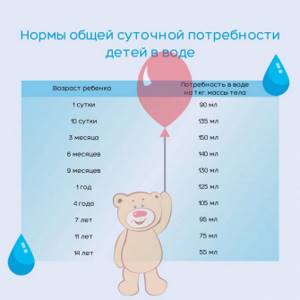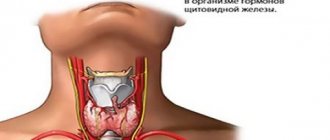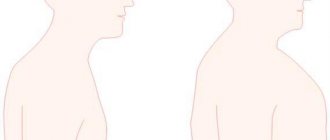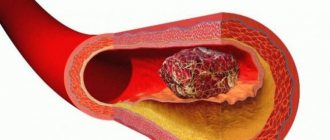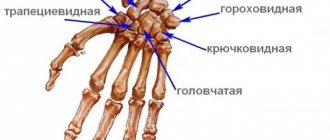The development of this disease may be based on many factors, but the most common are calcium and phosphorus metabolism disorders, abnormal development of the urinary tract, chronic infectious and inflammatory diseases of the urinary tract, diseases of the endocrine system, heredity, etc.
- Urinary stones can be classified according to the following aspects: etiology of stone formation, mineral composition of the stone (mineralogy), size, location and radiological characteristics of the stone.
- Stones can be divided into those that were formed as a result of infection (infectious), and those that were not caused by infection (non-infectious), as well as those that arose as a result of genetic disorders, and those that formed as a side effect when taking medications (medicinal).
- Urolithiasis affects approximately 10 to 20 percent of the world's population, with urolithiasis affecting men more often than women, in a ratio of 3:1 with a maximum peak at the age of 40-50 years.
1.General information
Kidney stones (the presence of which implies characteristic renal dysfunction and an abnormal composition of biological fluids in the body) are not a purely modern “disease of civilization.” They were found, in particular, in the most ancient Egyptian mummies (3.5-4 thousand years BC) and are mentioned in many ancient medical treatises. However, today, taking into account the unnaturalness and obvious pathogenicity of the lifestyle, nutrition, and fluid consumption of modern people, urolithiasis is becoming a truly global problem: up to 40% of hospitalizations in specialized hospitals are due to this diagnosis, and the total incidence on the globe reaches, according to various estimates, 4-5%. The process usually starts at a young and mature age, and in old age the probability of detecting kidney stones increases by 2-3 times. It is also known that women get sick three times more often than men.
Crystalluria, or salt diathesis, is one of the dominant factors in stone formation (the process of stone formation).
This term refers to the increased content in the urine of crystalline salt residues formed during the reaction of bioactive acids in the body (primarily uric and oxalic, as well as carbonic, phosphoric, etc.). Such solid crystalline particles accumulate in the renal pelvis and settle on the inner walls of the urinary tract, which leads, in combination with other unfavorable factors, to the gradual formation of stones.
However, the age-related statistical trends here are somewhat different: unlike urolithiasis as such, crystalluria (its predictor and direct prerequisite) is detected in a third of modern children, so the problem cannot be considered insignificant or highly specialized.
A must read! Help with treatment and hospitalization!
Basics of therapy
Urate stones are the only type of kidney formation that undergoes dissolution. They can be eliminated from the body naturally. For this, drug therapy and a special diet are used.
Medicines for kidney stones
Since urate stones in the kidneys need to be dissolved quickly, doctors prescribe appropriate medications to patients. It can be:
- Potassium citrate;
- Phytolit;
- Urolesan;
- Purinol;
- preparations based on the active substance allopurinol.
You cannot buy them for yourself; it is important that your doctor determine the treatment regimen and dosage. But you can adjust your diet.
2. Reasons
The main factors for the presence of crystalline salts in excreted urine are:
- deficiency of enzymes that break down the corresponding compounds (enzymopathy);
- inflammatory processes in the kidneys (nephritis).
Risk factors:
- insufficient daily fluid intake;
- the predominance of salty, spicy, sweet and sour foods in the diet;
- gestational period (gestation of pregnancy).
Crystalluria can also be promoted by drinking excessively filtered water (purified almost to a distilled state, as is done in some expensive modern individual water treatment systems); The fact is that simultaneously with harmful impurities, microelements and compounds necessary for humans are also removed from the water.
It should be noted that about 80% of all detected kidney stones are formed by oxalates, i.e. salts of oxalic acid. Disorders of its metabolism (as well as the circulation of other acids) in some cases are caused, in addition to the factors listed above, by hereditary predisposition.
Visit our Nephrology page
Stones in the kidneys
* the promotion is valid until 09/30/2021
Price
| Service | Price in UAH |
| Consultation with urologist Shmulichenko A.V. | 530 |
| Consultation with urologist Tishchenko A.V. | 430 |
| Ultrasound of the kidneys, adrenal glands and bladder in women | 420 |
| Ultrasound of the kidneys, adrenal glands and bladder in men | 580 |
| CT search for stones in the urinary system | 1200 |
| Laser crushing of stones | Promotion: 14 900 17 850 |
Learn about treatment
Kidney stones are a pathological condition caused by a violation of water-salt metabolism in the body and changes in blood composition
Oxalate . They are formed from calcium salts of oxalic acid. The structure of the stones is dense, black-gray in color, with a prickly surface. In contact with the surface of the mucosa, the spiky edges of the stone easily scratch it, turning dark brown or black with blood. Such contact causes pain in the lower back, groin area, genitals, and inner thighs. Due to oxalate damage to the mucous membrane and bleeding, urine may turn dark yellow or red.
Calcium oxalate stones are fairly easy to detect using x-rays or ultrasound. But due to their hardness and dense structure, oxalates do not dissolve and are not excreted from the body. In order to get rid of such kidney stones , lithotripsy is performed - remote or contact. This is a non-surgical method of destroying stones using various types of energy effects. In the case of large oxalate stones, surgical intervention is prescribed.
Phosphate . The main component is calcium salts of phosphate acid. The composition is soft, with a smooth surface, the color is light gray. The main reason for the appearance is a violation of metabolism and acid-base balance towards alkali. The pH rises above 6.2. If you find light, loose flakes in your urine, this is a sure sign of phosphate kidney stones . Phosphate stones are easy to crush and dissolve.
Urate . The main component of urates is uric acid or its salts. The stones are yellow or brown, smooth, and hard in consistency. Urates occur in various places in the urinary system and are difficult to detect by x-ray. The most reliable way to identify urate stones is a urine test. To remove urate stones from the kidneys , drug treatment, as well as a diet with plenty of fluids and moderate exercise, have been successfully used.
Carbonate . The main material is calcium salts of carbonic acid. The color of the stones is white, the consistency is soft, the surface is smooth, and they can be of completely different shapes.
Cystine . Contains sulfur compounds of the amino acid cystine. The stones are yellowish-white, round in shape, soft and smooth. The cause of cystine stones in the kidneys is cystinuria, a congenital metabolic abnormality in which the level of cystine in the urine is constantly higher than normal. Cystine is determined by urine examination and has the appearance of hexagonal crystals. Cystine stones are also well diagnosed using ultrasound. Treatment of cystine stones is medicinal, using drugs that stop the conversion of cysteine to cystine. If large stones are detected, surgical intervention is recommended.
Cholesterol . The main component is cholesterol. The stones are black in color and soft in consistency. They crumble very much, so they are dangerous.
Xanthinaceae . They are formed when the metabolism of the enzyme xanthine oxidase is disrupted, which leads to disruption of the mechanism for converting xanthine into uric acid. Xanthine is poorly soluble in water and is excreted unchanged from the body. The stones contain virtually no calcium and are impossible to see with x-rays. But thanks to their soft structure, xanthine stones are easily detected by ultrasound.
Protein . Protein kidney stones contain fibrin, salts and bacteria. The stones are white, small, flat, soft in consistency and of different shapes.
Struvite . Occurs in an infected alkaline environment. Bacteria act on urea, which leads to an alkaline reaction and precipitation of carbonates, magnesium, ammonium, phosphorus, from which stones are formed. A urine test may reveal coffin-lid shaped crystals. Drug treatment is ineffective in most cases. To remove such stones, shock wave kidney lithotripsy or open surgery is used if the stones are large.
3. Symptoms and diagnosis
With crystalluria, especially in the initial stages, there may not be any subjective discomfort. However, with the appearance of “sand” or as small stones form, pain is felt in the lower back, pain when urinating, pulling or sharp pain in the lower abdomen; Sometimes the urine becomes noticeably cloudy and visible streaks of blood may appear in it.
With constant irritation and injury to the walls of the urinary tract, an infection may develop, the symptoms of which dominate in this case.
Diagnosis of crystalluria is based, of course, primarily on laboratory analysis (general clinical urine analysis). Family and life history is also of diagnostic importance. Additionally, ultrasound, contrast radiography of the urinary tract, etc. may be prescribed.
About our clinic Chistye Prudy metro station Medintercom page!
How are stones formed?
- The first stage is the formation of the nucleus . Calcium ions and oxalates are filtered by the kidneys and then end up in the urine. Spontaneously uniting, they form the primary “focus or center of crystallization.”
- The second stage is growth . Tiny salt crystals pass through the tubules of the kidney, and are usually deposited in the renal papillae, where the next phase of their formation takes place.
- The third stage is aggregation . Salts accumulate in the renal papilla and form stones. Depending on the characteristics of metabolism, the process can take several months or many years.
The fourth stage is delay. If the stone reaches 4-5 mm, it is highly likely to get stuck in the ureter. Herniation occurs at the level of the ureteropelvic segment, the intersection of the iliac vessels by the ureter and in the area of the orifice - before the entrance to the bladder.
The herniation causes pain and obstruction of urine flow.
For various reasons - changes in diet, drug therapy or exercise - a stone can leave the ureter. The stone slowly descends into the bladder, from where it comes out with a stream of urine.
According to the Federal State Statistics Service, 6% of the country's population suffers from urolithiasis. In 60% of cases, the stones will pass on their own.
If stones grow, surgery may be required: endoscopic removal, external shock wave therapy, or other surgical intervention.
About half of patients are likely to re-form the stone within four years. In case of relapse, the safe period is reduced to three years.
4.Treatment
As can be seen from the above, ignoring crystalluria, even if it is diagnosed by chance and does not yet manifest itself, is at least unreasonable, since its only possible outcome is urolithiasis, which requires a completely different, usually surgical, treatment.
For crystalluria, drugs are prescribed that dissolve and/or absorb salts that stimulate urine excretion, as well as, in the presence of a concomitant infectious process, antibiotics and anti-inflammatory drugs. A special diet prescribed by a doctor on an individual basis is strictly required. If all prescriptions are followed, the prognosis is favorable: the concentration of salts in the urine, as a rule, can be normalized.
Clinical picture and symptoms of urolithiasis
The clinical picture of urolithiasis is varied and extremely individual. In most cases, urolithiasis may not bother the patient at all, and is diagnosed accidentally according to laboratory and imaging studies. The first and most common symptom of urolithiasis is pain. Its localization depends on the location of the stone, but at the same time it can radiate (give) to neighboring areas. In most cases, pain occurs due to migration of a stone from the kidney to the ureter, or when the outlet of the pelvis is blocked, which leads to disruption of the outflow of urine from the kidney.
At the location of the stone in the ureter, swelling and spasm may occur, which also disrupts the flow of urine and the expansion of the pelvis (hydronephrosis). A painful attack due to obstruction of the cerebral palsy by a stone is called renal colic.
Often, renal colic may be accompanied by nausea, vomiting, stained urine (macrohematuria), and frequent urination. The intensity of the pain attack can vary, especially if there are small stones and the outflow of urine from the affected kidney is preserved. About 80% of patients admitted as an emergency to a urological hospital are patients with this particular form of urolithiasis. Upon admission to the hospital, renal colic sometimes needs to be distinguished from acute appendicitis, gallstone disease, and acute myocardial infarction.
As a rule, an experienced specialist does not have any difficulty establishing an accurate diagnosis. This is helped by instrumental examination methods such as ultrasound and computed tomography. In our clinic, as in other well-equipped hospitals, these studies take a total of less than 40 minutes: this time is enough to determine the size, quantity, location, density of the stone and determine further treatment tactics.
Symptoms of salts in the urine (crystaluria):
- abdominal pain during urination;
- visible sediment in the urine, deposits on the potty (which may be difficult to wash off);
- irritation, redness and itching in the external genital area.
For a child with dysmetabolic nephropathy, drinking regime is important. Parents are wondering how much to drink? We have prepared a table for you that shows the daily water requirements for children.
